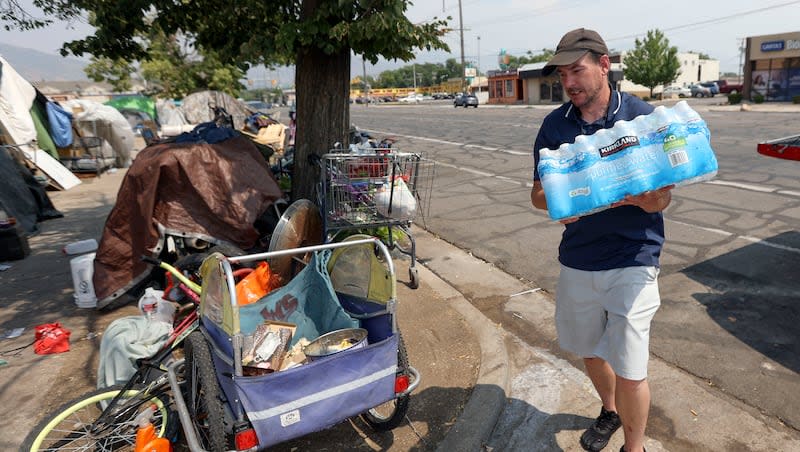Utah lawmakers dedicate $25 million for homeless shelter and $2.5 million for vulnerable people with mental illnesses

Utah lawmakers dedicated more funding to address homelessness, including $25 million toward a new low-barrier emergency shelter and $2.5 million to mitigate impacts on communities where facilities that serve people experiencing homelessness are located.
The Utah Legislature’s Executive Appropriations Committee approved the funding on Thursday, along with $11.8 million to support the state’s system of homeless services.
Asked about the $25 million for a shelter, Senate Budget Chairman Jerry Stevenson, R-Layton, said “We can see the problem we’ve got down there.”
Lawmakers “have a lot of confidence” in former Utah Senate President Wayne Niederhauser, now the governor’s state homeless services coordinator, Stevenson said.
“We’re able to take that money and put it in a good spot, put it in a really good place and spend it wisely and hopefully, take care of the problem we have,” he said following the meeting.
According to The National Alliance to End Homelessness, a low-barrier emergency shelter provides “immediate and easy access to shelter by lowering barriers to entry and staying open 24/7; eliminate sobriety and income requirements and other policies that make it difficult to enter shelter, stay in shelter, or access housing and income opportunities.”
Niederhauser, who attended the committee meeting, was clearly pleased with its actions.
“We’re very grateful. Thanks to the Legislature. I know that’s a heavy lift for them. They’ve got a lot of demands, a lot of funding priorities. To get this much extra money is a big deal for us,” Niederhauser said.
It was, however, less than the $115 million in one-time funding Utah Gov. Spencer Cox requested in his budget recommendations.
But prior to Thursday’s meeting, “We had zero,” Niederhauser said.
The funding approved by the appropriations committee also included nearly $2.5 million in one-time and ongoing funds to support initiatives in HB421, which, in part, seeks to ease transitions for patients released from the Utah State Hospital.
“Unfortunately, too high a number of patients are discharged into homelessness,” the bill’s sponsor, Rep. Steve Eliason, R- Sandy, said during debate in the Utah House of Representatives earlier in the session.
“This bill gives the state hospital authorization, as funds are available, to contract with other qualified entities to help individuals coming out of the state hospital receive step down services,” he said.
The bill also calls on the Utah Homelessness Council to establish standards that prioritize shelter beds for patients discharged from the state hospital as well as families that qualify for Temporary Assistance for Needy Families benefits.
The legislation also establishes the HOME Court Pilot Program to provide for comprehensive, court-supervised treatment and services for people in Salt Lake County with mental illness.
In what Stevenson oft-described as a “socks and underwear” budget year, Niederhauser noted “We got $10 million ongoing last Friday. Today we got the mitigation fund, which is the $2.5 million ongoing and we got $40 million one-time towards the $115 million” sought by the executive branch.
“It’s a big year for us,” he said.
A change in Utah’s state-controlled alcohol sales could result in another $2 million to $4 million in funding, Niederhauser said.
“We’re very grateful. We’re going to put it to good use,” he said, including establishing a new shelter with 600 to 800 beds.
“It is a big lift because locating it is… probably more difficult than getting new funding,” he said.
Niederhauser said the new shelter probably won’t be ready for next winter, so there will have to be a plan for putting together beds, as the state has done over the past two winters.
The funding must be approved by the full Legislature before the session ends Friday at midnight.

